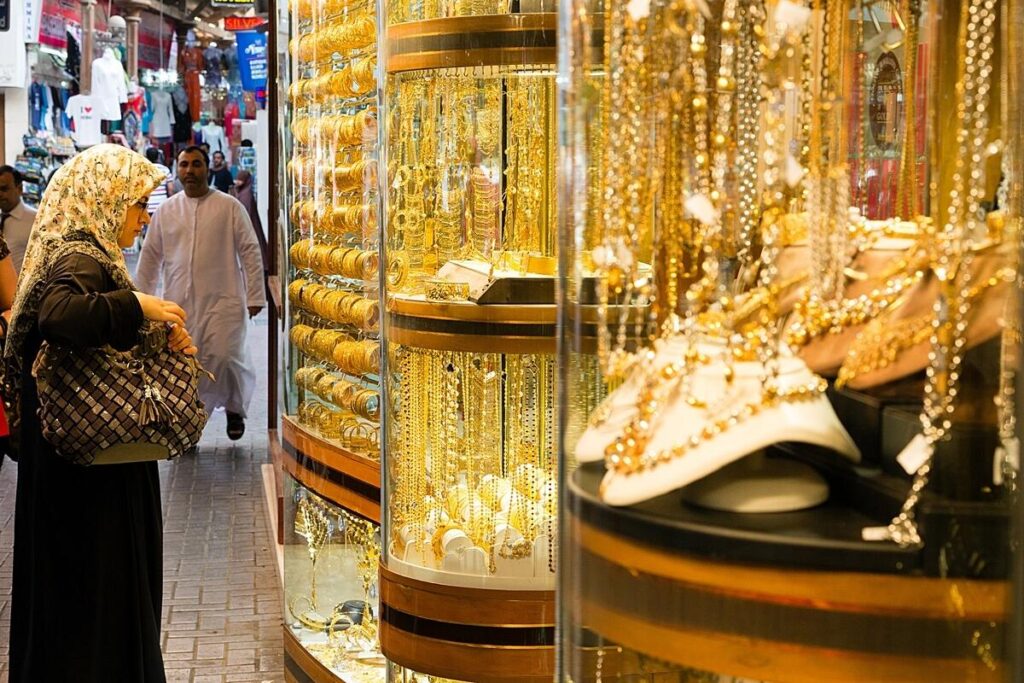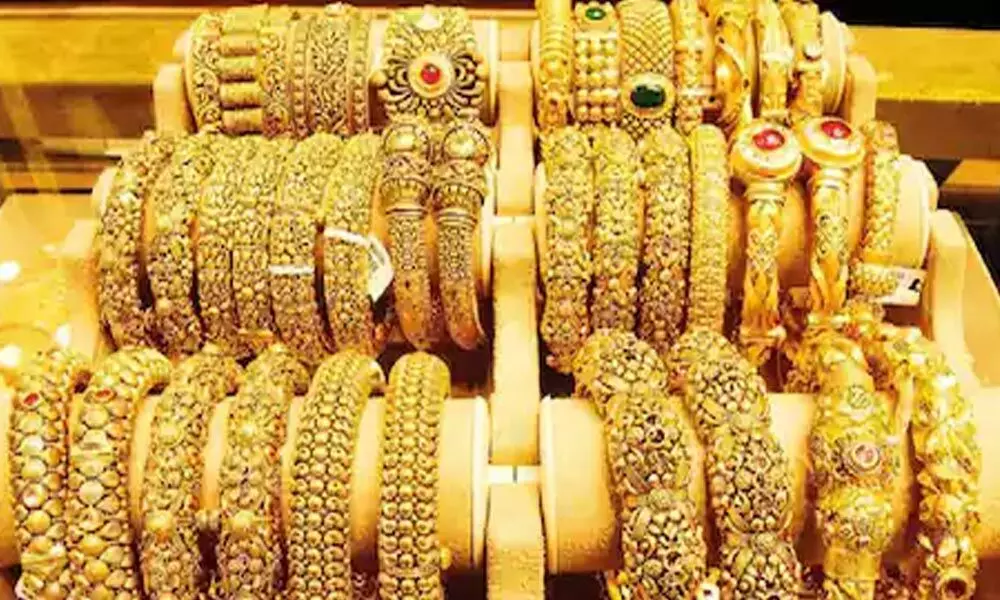
Table of Contents
Today’s Price in India: Investing in gold is considered a good and secure option in India, which is why most people in India invest their money in gold. However, before investing in anything, we should gather complete information about it. So, in today’s post, you will learn about the today’s gold price in India to get a complete understanding of what the gold rates are in the main cities of India. This information is crucial if you are considering investing in gold, ensuring you have the right information to make informed decisions.
If you don’t have accurate information about gold prices, you may incur losses when buying gold. Therefore, read this post till the end, as gold prices fluctuate daily in India. It’s essential to have accurate information about gold prices, as gold can be affordable at times and expensive at other times, leading to joy or disappointment among people.
In this post, you will find daily updates on prices. The current gold prices for 18 carats, 22 carats, and 24 carats gold in India are provided below:
Today’s 18 Carat Gold Price:
Today’s 18 Carat GOLD Price:
- 1 gram: ₹4,336
- 10 grams: ₹43,365
- 100 grams: ₹4,33,600

Today’s 22 Carat Price:
Today’s 22 Carat Price:
As of October 13th, 2023, in New Delhi, India, the price of 22-carat gold is ₹54,010 per 10 grams.
- 1 gram: ₹5,401
- 8 grams: ₹43,208
- 10 grams: ₹54,010
- 100 grams: ₹5,40,100
Today’s 24 Carat Gold Price:
In New Delhi, India, on October 13th, 2023, the price of 24-carat gold is ₹58,530 per 10 grams.
- 1 gram: ₹5,892
- 8 grams: ₹47,136
- 10 grams: ₹58,920
- 100 grams: ₹5,89,200

To know the prices in your city, check the information provided below for major cities in India:
| City | 22 Carat Gold (10 grams) | 24 Carat Gold Price (10 grams) |
|---|---|---|
| New Delhi | ₹54,160 | ₹59,070 |
| Mumbai | ₹54,010 | ₹58,920 |
| Chennai | ₹54,160 | ₹59,080 |
| Hyderabad | ₹54,010 | ₹58,530 |
| Kolkata | ₹54,010 | ₹58,920 |
| Ahmedabad | ₹54,060 | ₹58,970 |
These prices provide a snapshot of gold rates in major cities, helping you make informed decisions based on the current market conditions.
Gold rate in Other Countries: Gold demand is not limited to India; it exists in many other countries. Here are the gold prices in other countries:
| Country | 22 Carat Gold Rate (10 grams) | 24 Carat Price (10 grams) |
|---|---|---|
| Kuwait | ₹49,770 | ₹50,390 |
| Singapore | ₹49,850 | ₹53,201 |
| Dubai | ₹46,568 | ₹50,307 |
| United States | ₹47,017 | ₹50,761 |
| Doha | ₹48,613 | ₹51,466 |
| Qatar | ₹48,613 | ₹51,466 |
| Muscat | ₹48,630 | ₹50,792 |
| Oman | ₹48,613 | ₹53,017 |
prices are influenced by various factors, including supply and demand, inflation, interest rates, and the reserve account of a country. These factors contribute to the fluctuations in gold rate, making it essential to stay informed about the current market conditions.

How Gold Rate Change in India:
How Gold Rate Change in India:
Gold is a financial asset whose prices change regularly. Various factors contribute to the changes in gold prices. Demand and supply are crucial factors affecting gold prices. When demand is high and supply is low, gold prices tend to rise, and vice versa. Festive seasons and wedding seasons in India often witness increased demand for gold, leading to higher prices.
Apart from demand, other factors influencing prices include:
- Inflation/Mahangai: When inflation increases in a country, the value of its currency decreases, prompting people to prefer holding their money in gold. This results in an increase in gold prices.
- Interest Rates: When banks raise interest rates on investments, people may choose to sell their gold to invest in interest-bearing instruments. This can lead to a decrease in gold prices. Conversely, when interest rates are lowered, people may opt for gold investments, causing an increase in prices.
- Reserve Account: The gold reserve held by governments also plays a role in determining gold prices. If a government decides to sell a significant portion of its gold reserves, it can lead to an increase in gold prices.
These are some of the primary reasons behind fluctuations in gold prices. It’s important to monitor these factors and stay updated on gold prices if you are considering investing in gold.

How to Purchase Gold:
How Gold Rate Change in India:
In the modern era, buying gold is convenient. If you prefer physical gold, you can visit any gold jewelry store in your vicinity to make a purchase. Alternatively, if you want to buy digital gold, several platforms, such as Zerodha and Groww, facilitate online gold purchases.
When buying physical gold, you can acquire gold coins, gold bars, or gold jewelry. If you are purchasing from a gold store, make sure to ask for a gold certificate for authentication.
Remember, gold is not just a popular investment in India but is considered a good investment option globally. Its demand remains high worldwide, making it a valuable asset in diversified investment portfolios.
Frequently Asked Questions: Here are the gold prices for various cities in India as of today:
- What is the gold in Ludhiana today?
- 24 Carat Gold Price: ₹59,350 per 10 grams
- What is the price in Madhya Pradesh today?
- 24 Carat Gold Price: ₹59,250 per 10 grams
- What is the gold price in Srinagar today?
- 24 Carat Gold Price: ₹56,910 per 10 grams
- What is the price in Bihar today?
- 24 Carat Gold Price: ₹59,480 per 10 grams
- What is the gold Rate in Varanasi today?
- 24 Carat Gold Price: ₹59,350 per 10 grams
- What is the gold price in Karnal today?
- 24 Carat Gold Price: ₹59,270 per 10 grams
- What is the gold price in Haridwar today?
- 24 Carat Gold Price: ₹59,280 per 10 grams
- What is the gold price in Bhilai today?
- 24
- Cultural Significance: Gold holds cultural and religious significance in India. It is often associated with festivals, weddings, and other auspicious occasions. Many families consider gold jewelry as a form of wealth and a symbol of prosperity.
- Inflation Hedge: Gold is considered a hedge against inflation. During times of economic uncertainty or rising inflation, investors often turn to gold as a store of value. The demand for gold tends to increase in such situations, influencing its prices.
- Jewelry vs. Bullion: While many people invest in gold through jewelry, it’s essential to note that the making charges and craftsmanship costs associated with jewelry can significantly reduce its investment value. Bullion, in the form of bars or coins, is often recommended for pure investment purposes.
- Government Gold Schemes: The Indian government has introduced various gold schemes to encourage individuals to invest in gold through official channels. Schemes like the Sovereign Gold Bond (SGB) and Gold Monetization Scheme provide alternative ways to invest in gold.
- Gold ETFs and Mutual Funds: In addition to physical gold, investors can explore Gold Exchange Traded Funds (ETFs) and gold mutual funds. These financial instruments allow investors to participate in the gold market without holding physical gold.
- Market Trends: Monitoring international and domestic market trends is crucial for gold investors. Global factors such as geopolitical tensions, economic indicators, and currency movements can impact gold prices. Additionally, local factors like government policies and import duties can influence the domestic gold market.
- Risk and Returns: Like any investment, gold comes with its own set of risks. While it is considered a relatively stable asset, its prices can be influenced by various factors. Investors should carefully assess their risk tolerance and investment goals before allocating funds to gold.
- Diversification Strategy: Gold is often recommended as part of a diversified investment portfolio. Including different asset classes helps spread risk and can provide a more stable long-term investment strategy.










[…] Today’s Gold Price ,Gold rate […]
[…] Today’s 22 Carat Gold Rate (as of October 16, 2023) in New Delhi, India: […]